Orchid Growth Patterns
This pictorial shows examples of the primary orchid growth patterns, monopodial and sympodial. Here we will describe some of the issues unique to each type.
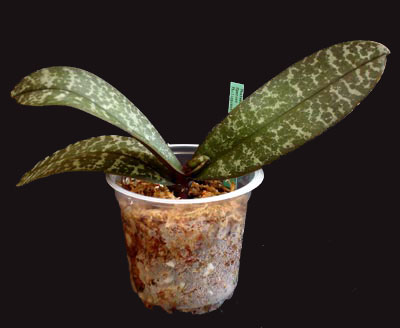
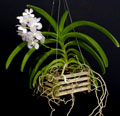 Monopodial
Monopodial
Monopodial orchids grow as a single upright "stem" with one leaf following another on opposite sides of the center. Common monopodial orchids are phalaenopsis and vanda. These orchids have no pseudobulbs and therefore limited water reserves to draw upon when dry. Monopodial orchids are repotted in the center of the pot as they will grow straight up. The plant to the right is both an example of a monopodial orchid as well as an example of how not all phalaenopsis leaves are solid green, some can be mottled and others are lime green.
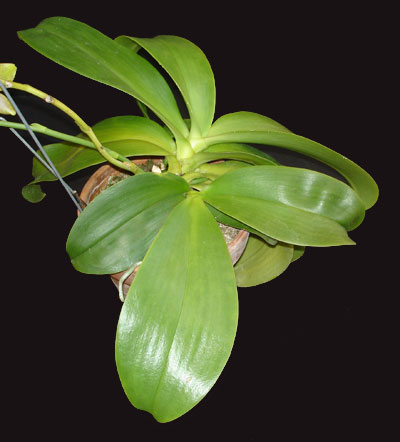
At the base of monopodial orchids are small nodes that lie dormant, often for a very long time. Occasionally, however, monopodial orchids will multiply by starting a new shoot at the base of the plant and in this way develop into sizable specimen plants. The new plant is called a 'basal keiki' and should not be separated from the parent. Because it shares the root system with the parent it will grow quickly and soon have flower spikes of its own. In cases of crown rot where the root system of the infected plant is strong a basal keiki may form to allow the plant to continue growing leaves. Because of this, we should not give up hope too quickly on a phalaenopsis with crown rot. We've seen cases where the mother plant will die but the basal keiki continues to grow into a full sized plant.
The plant at right is Phalaenopsis Orchid World 'Joe' and is several years old. Its leaves are naturally lime green.
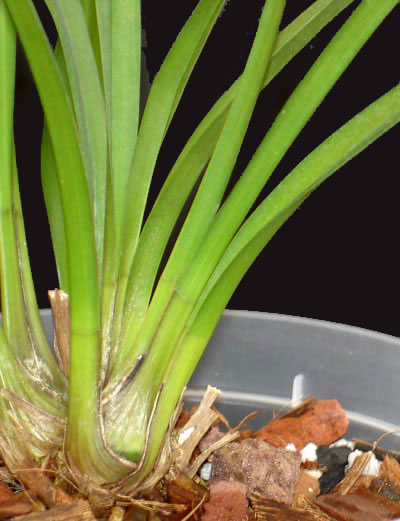
 Sympodial
Sympodial
Sympodial orchids have pseudobulbs that provide a reserve of water when the plant dries. Sympodial orchids grow new pseudobulbs from the base of the previous pseudobulb and over time develop multiple growth leads along a single horizontal rhizome. Most orchid genera are sympodial.
A pseudobulb refers to and individual "shoot" of a sympodial orchid which has a chunky base to hold water topped with leaves. Sometimes the pseudobulb is small and the leaves are long (as in Cymbidiums, shown at right) and sometimes the pseudobulbs are long and the leaves are small (as in Dendrobiums, shown below). Bloom spikes usually come from where the outermost leaf meets the pseudobulb. To assist in anchoring a sympodial orchid in the pot, a rhisome clip can be placed across the pot and between the pseudobulbs to secure the plant.
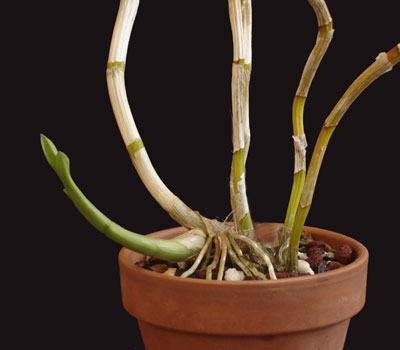
At the base of sympodial orchids are small nodes that are called "leads". A sympodial orchid may have one or more leads and from these will grow new pseudobulbs. Shown to the right is a new Dendrobium pseudobulb. This young plant has only one lead and is therefore growing in only one direction. The plant can stay in this pot one more year but after this the next pseudobulb will grow outside the pot so we plan to repot this plant next spring as the new growth begins to form and evidence of young roots is apparent. We will repot before the pseudobulb grows to this size. Mature sympodial orchids with several leads they can be propagated by division into multiple plants each with its own lead(s).










